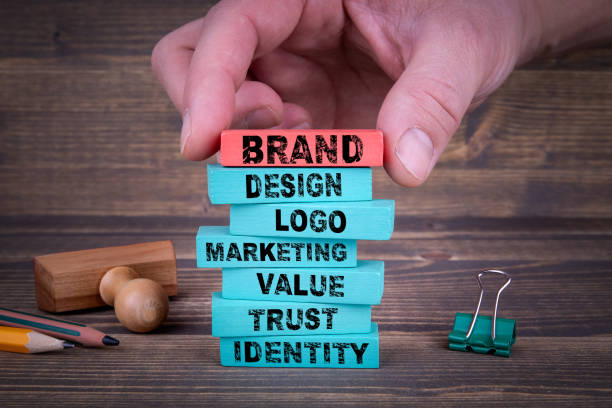Est. reading time: 6 minutes

Do you know that you could have the best product, but with sales that sucks? What could be the problem? Research has proven that 81% of customers need to trust a brand before buying from them. And you know that trust is earned. Now, you are probably thinking how do I earn that trust? Good question. Look no further as we present to you the missing piece: brand management. Let’s find out more.
What Brand Management Is Not
One of the branding mistakes you should avoid is mistaking brand management with marketing. As much as they both have similar influence on brand-customer relationships, marketing is a latter part of management. There is marketing before brand management.
Take for instance, if a business should launch today, what it does first is the marketing of the business. Then, over time, that business can do brand management. This is to say that a brand can do marketing without brand management, however, there is no brand management without marketing. Take note again that this does not underestimate the importance of brand management; we are simply distinguishing between brand management and marketing.
So, let’s go into brand management proper.
Brand Management: What Is It?
Brand management is a process to maintain and improve a brand’s value and reputation, thereby increasing its awareness and bringing it forth to its target audience. The ultimate goal of brand management is to create a positive environment—reputation and image—around a brand to increase the need for the value it creates.
The Body Parts of Brand Management
Anything a brand does to make it better is brand management. It This includes;
1. Product design
2. Visual Designing
3. Packaging
4. Distribution
5. Advertising
6. Marketing
7. Public relations
And even customer service.
Brand Management Principles: The REL Formula
Just as we pointed out, that brand management is a process; a strategic one at that. From creating a brand to giving it a name, designing its visuals, posting content on different channels, becoming recognized, consumers choosing it over other highly competitive competitors, and being labelled a household name, there are three basic milestones a brand must cross to build effective brand management.
1. The ‘R’ in REL: Brand Recognition.
Aside from a brand’s name, does a brand ring a bell or evoke some sort of familiarity in the audience when they come across it? Imagine your brand were to be a person and it was blindfolded, can the audience still say, “Oh, I know this brand? It is so-and-so.”
Brand recognition is when the audience can identify a brand even without the name. Having a brand name is non-negotiable, no doubt. It is a must, but it takes more than the name for people to become familiar with a brand. What if you rebrand the name? What if you create other products? Logo, colour, font use, image, tone, and personality down to packaging all contribute to a brand’s recognition.
2. E for Equity: Brand Equity.
This is how valuable a brand is to its customers. Customers’ experience forms their perception of a brand over time. But it takes time. A brand should be consistently consistent with making its consumers feel good. Make them feel satisfied and watch them give pleasant reviews about your brand. It’s no magic.
3. L for Loyalty; Brand Loyalty.
If a brand achieves two of these principles but fails in the third, then brand management has not totally achieved its purpose because the customers can still be persuaded to try out other alternative brands. Brand loyalty is the peak a brand can attain: Loyal Customer Community.
Brand loyalty completed the KLT formula in marketing and sales – the Know, Like, and Trust formula. The formula says that people buy from who they know [brand recognition], like [brand equity] and trust [brand loyalty].
If a brand should attain this level, then it has won the hearts of the customers and an emotional connection between the brand and the customers has been established which will make them choose the brand over its competitors.
5 Strategies Any Brand Should Know To Build An Effective Brand Management
With a crowded market, managing a brand could be quite difficult. But relax, that’s why Kian Consult is here. To ease the process for you. But there’s a simple task for you attached. All you have to do is read this article to the end.
Here are 5 strategies for building strong brand management;
1. Own your brand identity
What do you want your brand to be known for? What perception do you want to create in the mind of your audience? These elements will guide you to define your brand and build a unique image for your business.
(A) Mission: it is the motivating force that keeps a brand on track and consistent. Let’s look at Amazon’s mission: “To be Earth’s most customer-centric company, where customers can find and discover anything they might want to buy online, and endeavours to offer its customers the lowest possible prices.”
Is Amazon living up to this mission? Yes. This mission guides the marketing teams in putting out strategies that work and align with the mission.
(B) Visual: When you think of a big brand like MTN, what comes to mind is the colour- yellow, the logo. It’s almost impossible to see a branded product of MTN and not recognize it. So, maintaining a consistent look is one way to effectively manage a brand.
(C) Tone with Personality: The brand’s personality should align with the time.
2. Make your Customers your priority
Brand management aids in building a community of loyal customers. Hence, the customers should be a priority. Research them and build an audience persona. A brand should know who it is selling to, what they want, and what they expect of the organization. This deep insight can be gained through surveys and customer feedback. A survey could be in the form of polls or quizzes. Do not ignore your customer’s feedback. The customer is king.
3. Craft Stories
We are all humans, and we have been wired to respond to stories. So, craft compelling stories that the audience can resonate with. The more relatable a story is, the more the audience will connect to your brand.
4. Create brand guidelines and strategy
Brand guidelines are the rules in place to ensure brand consistency across all channels. With these rules, keep the members in check and guide them into communicating the true message of the brand.
5. Be trendy.
The marketing world is ever-evolving. Do not slack and keep your eyes on trends.
Why Should Every Brand Embrace Brand Management?
Creating a brand is one thing; sustaining that brand is another thing entirely. If it takes 100% energy to build a brand, it will probably take 5x of that energy to sustain it. Brand management is therefore crucial for any brand’s success.
1. Consistency and Cohesiveness
With multiple channels of connecting with the audience, brands may end up with multiple identities which confuses the customers. Brand management helps to achieve consistency and cohesiveness across all these channels.
How can brand management achieve this? A good brand management strategy and brand guidelines help to structure when, how, and what to post on these channels to form one unique strategy.
2. Increased Brand Awareness and Recognition
A unique brand identity [through consistent themes, visuals, tone, and personality] makes a brand stand out from its competitors in the saturated market, thereby boosting the brand’s recognition.
3. Customer Loyalty
Strong brand management fosters a lasting relationship with the consumers. What else can a brand ask for if not a loyal customer base with unwavering support? It is not enough to build a brand. Can your customers trust your brand enough to recommend it to others? This is what brand management does: turn first-time customers into returning customers.
If you do not want to build a brand of one-time customers, you must embrace brand management. A loyal customer community also doubles as a brand mouthpiece: spreading the brand’s story and recommending it to others. Big brands like Coca-Cola, Nike, and Ford are examples.
4. Premium Pricing
Brand management helps to improve the value and reputation of a brand over time. A brand with a strong reputation can sell its products at premium prices. An example is Apple. Take a look at their prices.
5. Enhances Teamwork
Because brand management involves marketing, design, and customer service, it bridges the gap among members of a brand and enhances teamwork in the organization. For example, designers create visuals that the marketing team uses.
6. Brand Extension
Having strong brand management makes it easier for businesses to expand their brands and create new products because of the loyal customers who trust them and also trust any other products of the brand.
A perfect example of this is Coca-Cola. Coca-Cola alone has over 8 products: Coca-Cola, Fanta, Sprite, Schweppes, Eva bottled water, 5alive juice, Monster, and Predator energy drinks.
7. Increased Sales
All the above benefits result in one thing. More sales and more sales.
Wrap Up
But before we do, you deserve a reward for coming this far. There is one more important piece you should know about brand management. Everything that has been discussed: the meaning, components, the REL principles, the 5 non-negotiable strategies every brand must know plus the importance, wouldn’t have been complete without it. And that is a brand manager. Behind every successful brand management is an efficient brand manager like Kian. With Kian Consult, you do not have to worry about your brand being out of business because we lift this burden off your shoulders. Connect with us today and let’s fill in the missing piece your brand needs to take it to that greater height.

